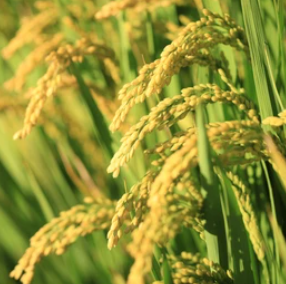Information report for OsNAC19;SNAC1
Gene Details
|

|
Functional Descriptions
- Overexpression of OsDSR2 could increase salt and simulated drought (polyethyleneglycol)-stress sensitivities in rice by downregulating the expression of ABA- and stress-responsive genes including OsNCED4, SNAC1, OsbZIP23, P5CS, Oslea3 and rab16C.
- The expression of OsNAC19 in rice leaves could be induced by the infection of blast fungus, and by application of exogenous methyl jasmonate (MeJA), ABA and ethylene but ethylene had a relatively weak induction effect.
- The expression of gene OsNAC19 was high in rice seedling roots, culms and blade sheathes, but its expression in rice leaves was low.
- Here, a rice homologue of SRO (similar to RCD one), termed OsSRO1c, was identified as a direct target gene of SNAC1 (stress-responsive NAC 1) involved in the regulation of stomatal aperture and oxidative response.
- The results suggest that OsSRO1c has dual roles in drought and oxidative stress tolerance of rice by promoting stomatal closure and H(2)O(2) accumulation through a novel pathway involving regulators SNAC1 and DST.
- The SNAC1-targeted gene OsSRO1c modulates stomatal closure and oxidative stress tolerance by regulating hydrogen peroxide in rice.
- Such up-regulated genes that are commonly and specifically up-regulated in OsNAC9 transgenic roots may account for the altered root architecture conferring increased drought resistance phenotype.
- The overexpression of OsNAC9 alters the root architecture of rice plants enhancing drought resistance and grain yield under field conditions.
- Under drought conditions, RCc3:OsNAC9 plants showed an increased grain yield of 28%-72%, whilst the GOS2:OsNAC9 plants remained unchanged.
- The aerenchyma of RCc3:OsNAC9 roots was enlarged to a greater extent than those of GOS2:OsNAC9 and non-transgenic (NT) roots, suggesting the importance of this phenotype for enhanced drought resistance.
- Field evaluations over two cultivating seasons showed that grain yields of the RCc3:OsNAC9 and the GOS2:OsNAC9 plants were increased by 13%-18% and 13%-32% under normal conditions, respectively.
- Here, we show that overexpression of stress responsive gene SNAC1 (STRESS-RESPONSIVE NAC 1) significantly enhances drought resistance in transgenic rice (22-34% higher seed setting than control) in the field under severe drought stress conditions at the reproductive stage while showing no phenotypic changes or yield penalty.
- The OsSKIPa-overexpressing rice showed significantly increased reactive oxygen species-scavenging ability and transcript levels of many stress-related genes, including SNAC1 and rice homologs of CBF2, PP2C, and RD22, under drought stress conditions.
- Our data suggest that SNAC1 holds promising utility in improving drought and salinity tolerance in rice.
- In this research, a full-length cDNA clone OsNAC19 (Oryza sativa NAC19), encoding a novel NAC-domain protein, was isolated from a cDNA library prepared with rice leaves infected by incompatible race 131 of blast fungus (Magnaporthe grisea).
- SNAC1 is induced predominantly in guard cells by drought and encodes a NAM, ATAF, and CUC (NAC) transcription factor with transactivation activity.
- Root-specific (RCc3) and constitutive (GOS2) promoters were used to overexpress OsNAC9 and produced the transgenic RCc3:OsNAC9 and GOS2:OsNAC9 plants.
- Interestingly, O-methyltransferase, a gene necessary for barrier formation, was specifically up-regulated only in the RCc3:OsNAC9 roots.
- Rice gene OsNAC19 encodes a novel NAC-domain transcription factor and responds to infection by Magnaporthe grisea.
- A stress-responsive NAC transcription factor gene SNAC1 has been reported for its function in the positive regulation of drought resistance in rice, and several downstream SNAC1 targets have been identified.
- However, a complete regulatory network mediated by SNAC1 in drought response remains unknown.
- In this study, we performed Chromatin immunoprecipitation sequencing (ChIP-Seq) and RNA-Seq of SNAC1-overexpression transgenic rice (SNAC1-OE) lines and wild-type under normal and moderate drought stress conditions, to identify all SNAC1 target genes at a genome-wide scale by RNA-Seq analyses.
- SNAC1 can bind to the OsbZIP23 promoter, an important ABA signaling regulator, and positively regulate the expression of several ABA signaling genes.
Functional Keywords
- salt , ABA , sheath , oxidative , root-architecture , stomatal , drought , ethylene , root , yield , salinity , grain , architecture , drought-resistance , jasmonate , blast , seed , culm , seedling , transcription-factor , reproductive , grain-yield , stomata , resistance , stress , drought-stress
Literature and News
- Rice gene OsNAC19 encodes a novel NAC-domain transcription factor and responds to infection by Magnaporthe grisea . DOI: 10.1016/j.plantsci.2006.07.019
- The abiotic stress-responsive NAC-type transcription factor OsNAC5 regulates stress-inducible genes and stress tolerance in rice . DOI: 10.1007/s00438-010-0557-0 ; PMID: 20632034
- The SNAC1-targeted gene OsSRO1c modulates stomatal closure and oxidative stress tolerance by regulating hydrogen peroxide in rice . DOI: 10.1093/jxb/ers349 ; PMID: 23202132
- The overexpression of OsNAC9 alters the root architecture of rice plants enhancing drought resistance and grain yield under field conditions . DOI: 10.1111/j.1467-7652.2012.00697.x ; PMID: 22551450
- Overexpressing a NAM, ATAF, and CUC (NAC) transcription factor enhances drought resistance and salt tolerance in rice . DOI: 10.1073/pnas.0604882103 ; PMID: 16924117
- A homolog of human ski-interacting protein in rice positively regulates cell viability and stress tolerance . DOI: 10.1073/pnas.0901940106 ; PMID: 19339499
- Overexpression of a new stress-repressive gene OsDSR2 encoding a protein with a DUF966 domain increases salt and simulated drought stress sensitivities and reduces ABA sensitivity in rice . DOI: 10.1007/s00299-013-1532-0 ; PMID: 24247850
- Genome-Wide Identification of SNAC1-Targeted Genes Involved in Drought Response in Rice . DOI: 10.3389/fpls.2019.00982 ; PMID: 31402926
- Transcription factor OsSNAC1 positively regulates nitrate transporter gene expression in rice . DOI: 10.1093/plphys/kiad290 ; PMID: 37204801
Gene Resources
- UniProt: Q75HE5
- EMBL: AC135594, AK067690, AK099245
- AlphaFoldDB: Q75HE5
- EnsemblPlants: Os03t0815100-01
- Gramene: Os03t0815100-01
- KEGG: dosa:Os03g0815100, osa:4334553
- Orthologous matrix: HSRTHSW
- InterPro: IPR003441, IPR036093
- PANTHER: PTHR31719, PTHR31719:SF249
- SUPFAM: SSF101941
- PROSITE: PS51005
- Gene3D: 2.170.150.80
- OrthoDB: Q75HE5
- SWISS-MODEL: Q75HE5
- eggNOG: ENOG502QRBC
Sequences
cDNA Sequence
- >LOC_Os03g60080.1
CATTCGAGAAATCCCTCACAACCCACAACATTTTCAAACAACGCAAAGCAGTAGCAGCAGCGAGAAGCAAGCAAGAAGCGATGGGGATGGGGATGAGGAGGGAGAGGGACGCGGAGGCGGAGCTGAACCTGCCGCCGGGGTTCAGGTTCCACCCCACGGACGACGAGCTGGTGGAGCACTACCTGTGCAGGAAGGCGGCGGGGCAGCGCCTGCCGGTGCCGATCATCGCCGAGGTGGATCTCTACAAGTTCGACCCGTGGGATCTGCCCGAGCGCGCGCTGTTCGGCGCCAGGGAGTGGTACTTCTTCACCCCGCGGGATCGCAAGTATCCTAATGGGTCACGCCCCAACCGCGCCGCCGGCAACGGGTACTGGAAGGCCACCGGCGCCGACAAGCCCGTCGCGCCGCGGGGGCGCACGCTTGGGATCAAGAAGGCGCTCGTGTTCTACGCCGGCAAGGCGCCGCGAGGGGTCAAGACTGATTGGATCATGCATGAGTACCGGCTCGCCGATGCTGGCCGCGCCGCCGCGGGCGCCAAGAAGGGATCTCTCAGGTTGGATGATTGGGTGCTGTGTCGGCTGTACAACAAGAAGAACGAGTGGGAGAAGATGCAGCAGGGGAAGGAGGTGAAGGAGGAGGCGTCCGACATGGTTACGTCGCAGTCGCACTCGCACACCCACTCGTGGGGCGAGACGCGCACGCCGGAGTCGGAGATCGTGGACAACGACCCCTTCCCGGAGCTGGACTCGTTCCCGGCGTTCCAGCCTGCGCCGCCGCCGGCGACGGCGATGATGGTGCCCAAGAAAGAATCGATGGACGACGCCACCGCGGCCGCCGCCGCCGCCGCCACCATCCCCAGGAACAACAGCAGCCTGTTCGTGGACCTGAGCTACGACGATATCCAGGGCATGTACAGCGGCCTCGACATGCTGCCGCCGGGCGACGACTTCTACTCGTCGCTCTTCGCGTCGCCGCGGGTGAAGGGGACGACGCCACGCGCCGGCGCCGGCATGGGCATGGTCCCGTTCTGAGGTGACGGCGACGCGATCGAACAGGTGGTGATCGATGCTGCAACGTGTGTAAATATACAGCGCCGGCTGGGTCAAGAGATGGCTCGGGTGACGCGCGCGCGGCGTGTCCTGGCGTTGGCGCCGGGGCATTCTTTAGTTTTTCATCTTTTCATCATCTCAGATGGTAGATACAAAACAGTGTATGTATGTAGCTCTGTTTCTCTCTATAGAACCCCAACAAATTTTGTTGTTGATGTTGTTTATCTTCATATGCTTTGATCTTGAAATCGTCTACCTTACTACTGCCGA
CDS Sequence
- >LOC_Os03g60080.1
ATGGGGATGGGGATGAGGAGGGAGAGGGACGCGGAGGCGGAGCTGAACCTGCCGCCGGGGTTCAGGTTCCACCCCACGGACGACGAGCTGGTGGAGCACTACCTGTGCAGGAAGGCGGCGGGGCAGCGCCTGCCGGTGCCGATCATCGCCGAGGTGGATCTCTACAAGTTCGACCCGTGGGATCTGCCCGAGCGCGCGCTGTTCGGCGCCAGGGAGTGGTACTTCTTCACCCCGCGGGATCGCAAGTATCCTAATGGGTCACGCCCCAACCGCGCCGCCGGCAACGGGTACTGGAAGGCCACCGGCGCCGACAAGCCCGTCGCGCCGCGGGGGCGCACGCTTGGGATCAAGAAGGCGCTCGTGTTCTACGCCGGCAAGGCGCCGCGAGGGGTCAAGACTGATTGGATCATGCATGAGTACCGGCTCGCCGATGCTGGCCGCGCCGCCGCGGGCGCCAAGAAGGGATCTCTCAGGTTGGATGATTGGGTGCTGTGTCGGCTGTACAACAAGAAGAACGAGTGGGAGAAGATGCAGCAGGGGAAGGAGGTGAAGGAGGAGGCGTCCGACATGGTTACGTCGCAGTCGCACTCGCACACCCACTCGTGGGGCGAGACGCGCACGCCGGAGTCGGAGATCGTGGACAACGACCCCTTCCCGGAGCTGGACTCGTTCCCGGCGTTCCAGCCTGCGCCGCCGCCGGCGACGGCGATGATGGTGCCCAAGAAAGAATCGATGGACGACGCCACCGCGGCCGCCGCCGCCGCCGCCACCATCCCCAGGAACAACAGCAGCCTGTTCGTGGACCTGAGCTACGACGATATCCAGGGCATGTACAGCGGCCTCGACATGCTGCCGCCGGGCGACGACTTCTACTCGTCGCTCTTCGCGTCGCCGCGGGTGAAGGGGACGACGCCACGCGCCGGCGCCGGCATGGGCATGGTCCCGTTCTGA
Protein Sequence
- >LOC_Os03g60080.1
MGMGMRRERDAEAELNLPPGFRFHPTDDELVEHYLCRKAAGQRLPVPIIAEVDLYKFDPWDLPERALFGAREWYFFTPRDRKYPNGSRPNRAAGNGYWKATGADKPVAPRGRTLGIKKALVFYAGKAPRGVKTDWIMHEYRLADAGRAAAGAKKGSLRLDDWVLCRLYNKKNEWEKMQQGKEVKEEASDMVTSQSHSHTHSWGETRTPESEIVDNDPFPELDSFPAFQPAPPPATAMMVPKKESMDDATAAAAAAATIPRNNSSLFVDLSYDDIQGMYSGLDMLPPGDDFYSSLFASPRVKGTTPRAGAGMGMVPF*